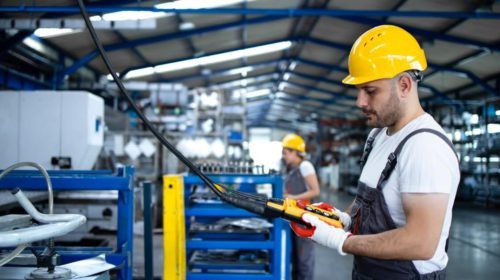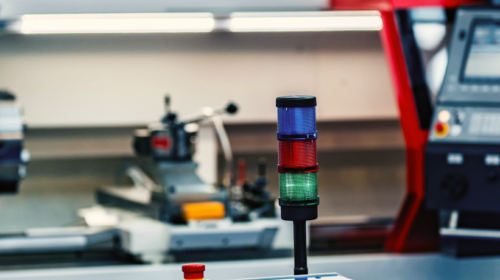
A Complete Guide to Jidoka
Learn everything there is to know about Jidoka, the Lean manufacturing method that creates a defect-free production line.

What is Jidoka in manufacturing?
Jidoka is a concept in Lean manufacturing that aims to create processes with autonomous, built-in quality controls. Essentially, Jidoka guarantees that machines as well as their operators have can shut down a process when an anomaly is detected. When it comes to machinery, it’s key that shutdowns happen automatically to prevent defective products from being created.
An often-used synonym for Jidoka is ‘autonomation’, a portmanteau of ‘autonomous’ and ‘automation.’
The goal (or ideal) is to set up a defect-free production system. This is, naturally, a key element of Lean, as defective products require reworking, which wastes time and increases costs.
Jidoka attaches importance to the particular strengths of both machines and humans. It is, first, important to lay the responsibility for detecting irregularities on the machines, so that it doesn’t require the constant attention of a human. However, Jidoka recognizes that machinery can be programmed up to a certain extent, but needs the ingenuity of humans to maintain, fix, and improve them.
What are the origins of Jidoka?
As the name reveals, Jidoka is a Japanese concept; it finds its origins in the 1890s when Sakichi Toyoda, who would later go on to found the Toyota Motor Company, invented a revolutionary device called the automatic power loom (Toyoda, by the way, also invented the 5 whys method). Jidoka is often seen as one of the two pillars of the Toyota Production System (TPS) next to the concept of just-in-time production.
What made Toyoda’s electric power loom so ground-breaking is that it could automatically detect and stop itself when a thread broke. Before, a machine would keep producing defective fabric when a thread broke and it was therefore necessary that an operator keep an eye on it continuously. With Toyoda’s invention, it was guaranteed that no defective fabric was produced and that the issue could be quickly corrected by an operator. Furthermore, this allowed a single operator to be responsible for multiple machines instead of one.
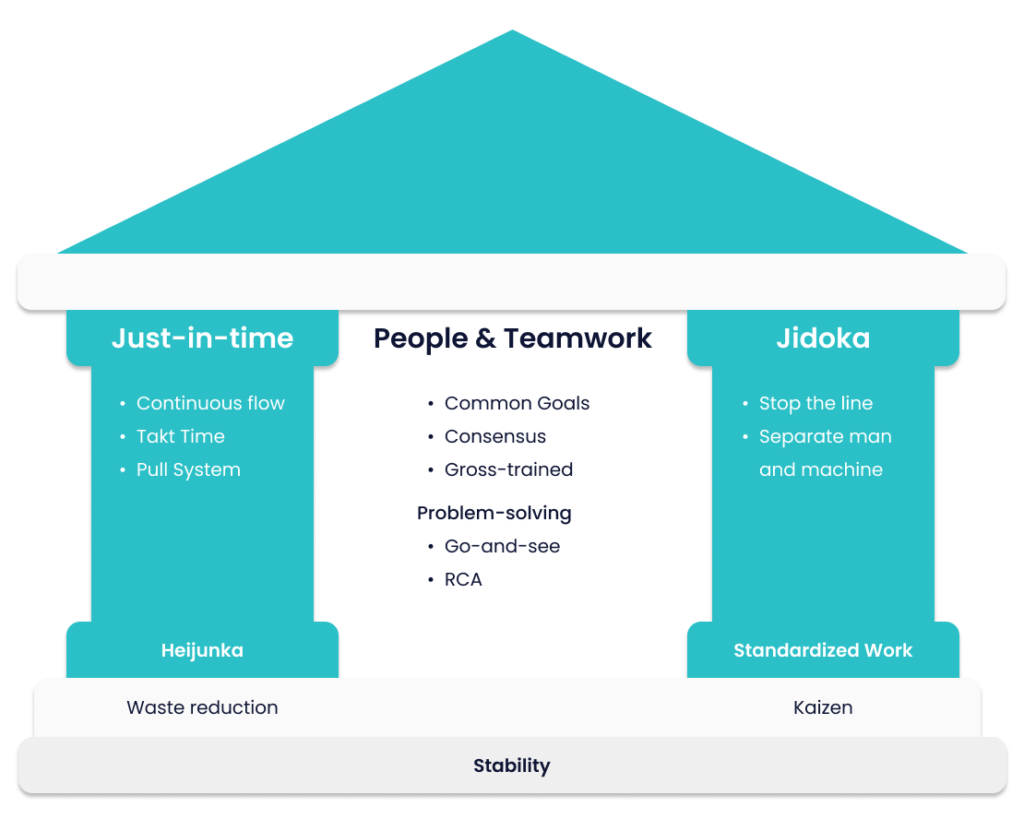
What are the benefits of Jidoka?
In shorts, the benefits of Jidoka are:
- Detects defects early on
- Early problem solving prevents production delays
- Makes it easier to pinpoint the root cause of a defect, due to being detected while the process is ongoing
- Less waste due to fewer reworks, downtime and breakdowns
- Fewer defects and more consistent product quality
- Lower repair costs due to fewer breakdowns
- Enables workers to control multiple machines
- Gives operators increased responsibility to shut down machinery autonomously
What are the 4 principles of Jidoka?
Jidoka is often said to consist of four key principles:
- Detecting the irregularity
- Shutting down the process
- Fix the problem immediately
- Inspect the problem further and fix its root cause.
Let’s quickly run through each of these to discover how Jidoka is applied on the shop floor.
Principles 1 and 2: detect and shut down
Crucial to Jidoka is that machines are able to detect irregularities and shut themselves down autonomously and automatically. This guarantees that no defective products are created, which leads to waste, and that the irregularity can be immediately detected and fixed by an operator. So-called Andon lights play an important part in immediate detection, as they alert operators that an issue has occurred.
Principle 3: apply a short-time fix
After the issue has been detected, operators should investigate the situation and, if necessary, request assistance. Consequently, they can apply a short-time fix and evaluate if it is possible to restart production.
Principle 4: find the root cause to implement a long-term fix
Naturally, a quick fix is often very valuable to keep the line flowing. However, Jidoka also takes the long term into account. If a certain issue recurs, operators and management should investigate it further until they detect its root cause. Then, they should implement preventive measures to bring about a permanent solution.
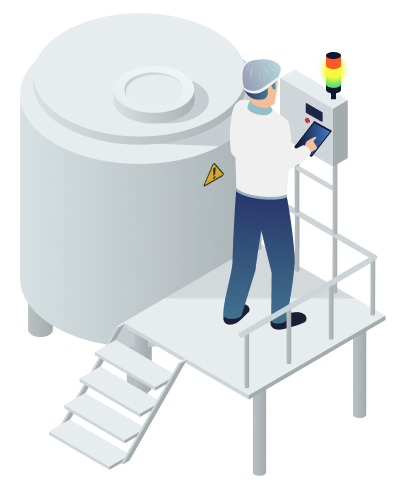
Examples of Jidoka in manufacturing
Let’s walk through a few quick examples of Jidoka in daily life and manufacturing.
A common example from daily life is a printer’s ability to shut itself down when a paper jam has occurred. Papers have the ability to tell if something has gone awry with the paper, and will shut themselves down so that the human can expect the anomaly.
In manufacturing, Jidoka is often done by sensors. A sensor can detect if a product doesn’t meet specifications and trigger a machine to shut itself down (or alert an operator to shut down production). This ensures that the issue can be inspected and no more defective products leave the line.
Time, furthermore, can also be an effective indicator of irregularities. If an operator (or sensor) notices that a product (step) is being produced in more than its designated takt time, alerts can be sent out to production personnel to inspect the issue.
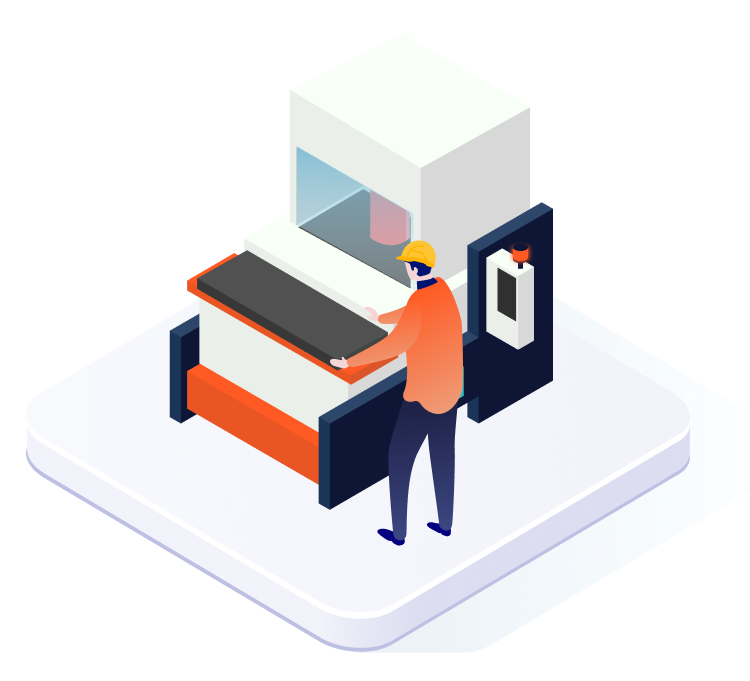
What is the difference between Jidoka and Poka Yoke?
Jidoka is the process of giving machinery the ability to detect irregular conditions and shut itself down so as to prevent defects. Poka Yoke, on the other hand, is the practice of installing the right mechanisms to alert that a mistake has been made or prevent a mistake from being made altogether. Poka Yoke, then, is focused on preventing and correcting human error; Jidoka, on the other hand, is a method that enables machines to react to react to an irregularity, whether caused by a human or not.
Related Articles
